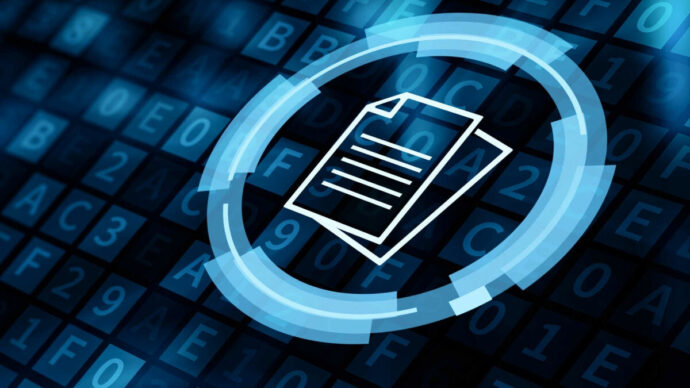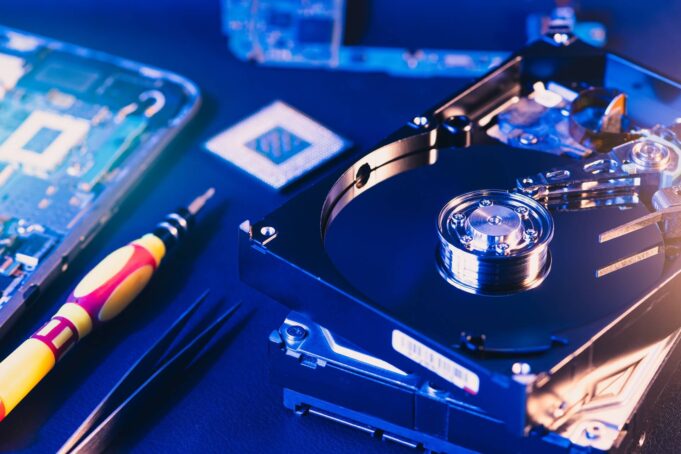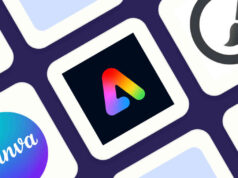Our trusty USB drives, those pocket-sized heroes of digital storage, hold more than just files. They carry memories, fuel projects, and keep our digital lives afloat. But what happens when a rogue click, a hardware hiccup, or simply fate throws your USB into a data disaster? Panic sets in: The frustration mounts. Suddenly, that once-reliable tech lifesaver becomes a desert of lost treasures.
Fear not, fellow data adventurers! There’s a beacon of hope in this digital wilderness: effective flash drive recovery. Timely action and the right tools can transform your data desert into a thriving oasis.
This guide is your map, guiding you through the challenges of USB data loss and introducing you to Wondershare Recoverit, the powerful ally you need to reclaim your lost files and restore digital peace of mind. So, let the data recovery process begin now!
Understanding USB Data Recovery:
Have you ever clicked “Delete” on a crucial document in a panic? Did you watch your USB drive get formatted, wiping out years of photos and memories? Or have you felt the heart-wrenching fear of a virus corrupting your priceless videos? You’re not alone. Data loss on USB drives is a common enemy, but understanding its nature can be your first step toward data recovery.
The Usual Suspects: Why Files Go Missing
Imagine your USB drive as a neatly organized library. Files are the books, carefully shelved and ready for access. But like any good mystery, data loss involves mischievous culprits:
The Accidental Eraser:
A careless click on “Delete” can send files flying off the shelves, disappearing into the digital void. (Imagine a mischievous child accidentally knocking over a bookcase!)
The Format Frenzy:
Like a library renovation, formatting erases everything, leaving the shelves bare and waiting for new books. (Picture a well-meaning librarian wiping clean all the shelves!)
The Corrupting Chaos:
Power outages, viruses, and hardware malfunctions act like mischievous gremlins, scrambling the book titles and making them unreadable. (Think of a mischievous storm scattering and damaging the library’s books!)
Time is of the Essence: Why Speed Matters
The good news? Lost files sometimes vanish forever. They often remain hidden in the digital corners of your drive, like misplaced books waiting to be rediscovered. But just like a book left out in the rain, the longer you wait, the higher the chance of permanent damage or loss.
So, act fast! The sooner you start recovery, the higher your chances of finding your lost treasures. (Think of a librarian diligently searching for and rescuing misplaced books before they get ruined!)
The Intricacies of USB Data Recovery

While recovering lost files from your USB drive might seem like a simple click away, there’s more to it than meets the eye. Let’s delve into the technical intricacies behind USB data recovery so you can understand its potential and limitations.
Challenges and Obstacles
Imagine your USB drive as a complex digital landscape. Lost files are like buried treasures hidden beneath layers of data. Recovering them requires specialized tools and techniques to navigate these layers without causing further damage. Here are some key challenges:
- Data Fragmentation: Deleting or formatting files doesn’t erase them. Instead, they scatter into fragments across the drive, making them harder to assemble.
- Overwriting: When you save new data on the drive, it can overwrite and permanently erase lost files, making recovery impossible.
- File System Corruption: Power outages, viruses, and hardware malfunctions can corrupt the drive’s file system, making it difficult even to identify the location of lost files.
Understanding Recovery Limitations
Not all lost files are recoverable. The success rate depends on various factors:
- Timeliness: Acting quickly after data loss significantly increases the chances of successful recovery.
- The extent of Damage: Severe corruption or overwriting can make recovery impossible.
- File Type: Some file types, like video or audio, are more susceptible to damage and harder to recover.
The Urgency Factor
Remember, time is your ally in USB data recovery. Every moment you wait, the risk of permanent data loss increases. It is why:
- Overwriting: The longer you use the drive, the higher the chance of new data overwriting lost files, making them unrecoverable.
- Data Degradation: Over time, even without overwriting, data can degrade and become unreadable, even with recovery tools.
Therefore, if you suspect data loss on your USB drive, stop using it immediately and initiate recovery as soon as possible.
Wondershare Recoverit: Your Comprehensive Solution

Now that we understand the complexities of USB data recovery let’s introduce a powerful tool to help you navigate this technical maze: Wondershare Recoverit.
Your Dedicated Data Recovery Ally
Wondershare Recoverit is a dedicated data recovery software specifically designed to tackle the challenges of USB drives. It offers:
- Advanced scanning algorithms delve deep into the drive to locate and recover even fragmented or corrupted files.
- User-friendly interface: The intuitive interface makes recovery easy and accessible, even for non-technical users.
- File type filtering: Recuse specific file types like photos, documents, or videos easily.
- Preview functionality: Preview recovered files before saving them to ensure you get the right data back.
Versatility beyond USB Drives:
Wondershare Recoverit isn’t just for USB drives: It can recover data from:
- Hard drives
- SSDs
- Memory cards
- Digital cameras
With its comprehensive features and versatility, Wondershare Recoverit empowers you to confidently tackle any data loss situation.
Step-by-Step Guide to Using Recoverit for USB Data Recovery
Open the Recoverit data recovery software on your computer and ensure your USB drive is connected.
Select USB Drive for Recovery:
From the main interface, choose the connected USB drive as the target location for recovery.
Initiate the Recovery Process:
Click on “Start” to commence the scanning process. Recoverit will analyze the USB drive, locating and displaying recoverable files.
Preview and Save Recovered Files:
Once the scan is complete, preview the recoverable files. Select the desired files and click “Recover” to save them to a secure location on your computer.
Best Practices for Maximizing USB Data Recovery Success:

Prevention is always better than cure! Here are some tips to minimize data loss and maximize your chances of successful flash drive recovery:
Regular Backups:
Implement a backup routine to safeguard your data against accidental deletion or hardware failures.
Safe USB Practices:
To protect your data, avoid sudden drive removals, improper formatting, and virus exposure.
Stop Data Writes:
Once you suspect data loss, stop using the USB drive immediately to prevent further file overwriting and increase recovery chances.
Final Words
In the fast-paced digital age, our trusty USB drives hold more than files; they hold memories, projects, and entire worlds of information. But data loss, like a sudden sandstorm, can transform these vibrant landscapes into barren deserts of despair. Yet, within this digital wasteland blooms a resilient flower: the power of data recovery software.
So, don’t let data loss hold you captive. Embrace the power of flash drive data recovery, explore the potential of Wondershare Recoverit, and reclaim your digital oasis. Remember, your memories, work, and cherished files are waiting to be returned to life.















